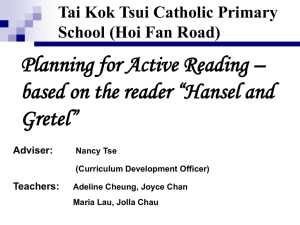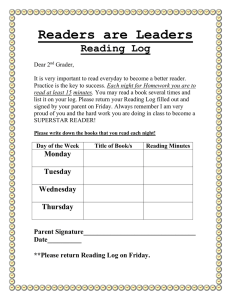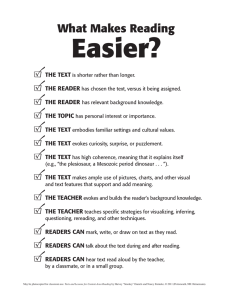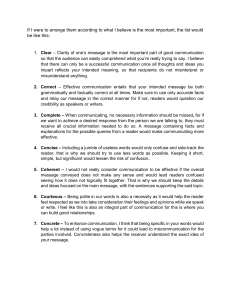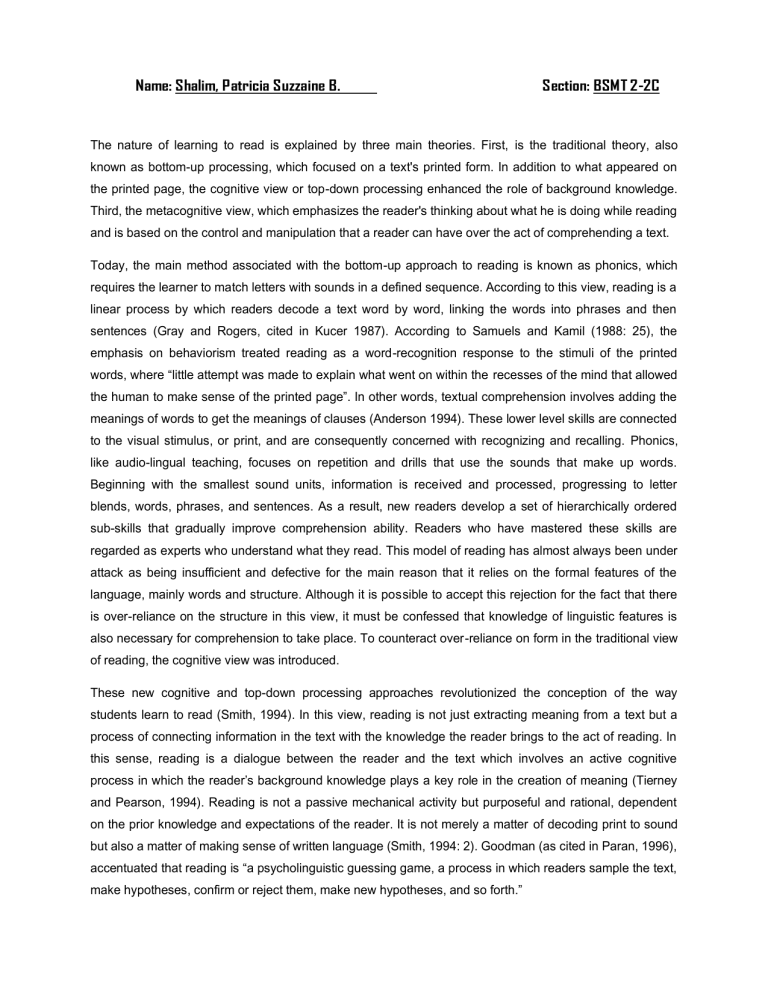
Name: Shalim, Patricia Suzzaine B. . Section: BSMT 2-2C The nature of learning to read is explained by three main theories. First, is the traditional theory, also known as bottom-up processing, which focused on a text's printed form. In addition to what appeared on the printed page, the cognitive view or top-down processing enhanced the role of background knowledge. Third, the metacognitive view, which emphasizes the reader's thinking about what he is doing while reading and is based on the control and manipulation that a reader can have over the act of comprehending a text. Today, the main method associated with the bottom-up approach to reading is known as phonics, which requires the learner to match letters with sounds in a defined sequence. According to this view, reading is a linear process by which readers decode a text word by word, linking the words into phrases and then sentences (Gray and Rogers, cited in Kucer 1987). According to Samuels and Kamil (1988: 25), the emphasis on behaviorism treated reading as a word-recognition response to the stimuli of the printed words, where “little attempt was made to explain what went on within the recesses of the mind that allowed the human to make sense of the printed page”. In other words, textual comprehension involves adding the meanings of words to get the meanings of clauses (Anderson 1994). These lower level skills are connected to the visual stimulus, or print, and are consequently concerned with recognizing and recalling. Phonics, like audio-lingual teaching, focuses on repetition and drills that use the sounds that make up words. Beginning with the smallest sound units, information is received and processed, progressing to letter blends, words, phrases, and sentences. As a result, new readers develop a set of hierarchically ordered sub-skills that gradually improve comprehension ability. Readers who have mastered these skills are regarded as experts who understand what they read. This model of reading has almost always been under attack as being insufficient and defective for the main reason that it relies on the formal features of the language, mainly words and structure. Although it is possible to accept this rejection for the fact that there is over-reliance on the structure in this view, it must be confessed that knowledge of linguistic features is also necessary for comprehension to take place. To counteract over-reliance on form in the traditional view of reading, the cognitive view was introduced. These new cognitive and top-down processing approaches revolutionized the conception of the way students learn to read (Smith, 1994). In this view, reading is not just extracting meaning from a text but a process of connecting information in the text with the knowledge the reader brings to the act of reading. In this sense, reading is a dialogue between the reader and the text which involves an active cognitive process in which the reader’s background knowledge plays a key role in the creation of meaning (Tierney and Pearson, 1994). Reading is not a passive mechanical activity but purposeful and rational, dependent on the prior knowledge and expectations of the reader. It is not merely a matter of decoding print to sound but also a matter of making sense of written language (Smith, 1994: 2). Goodman (as cited in Paran, 1996), accentuated that reading is “a psycholinguistic guessing game, a process in which readers sample the text, make hypotheses, confirm or reject them, make new hypotheses, and so forth.” Schema Theory Another theory closely related to top-down processing called schema theory also had a major impact on reading instruction. It describes in detail how the background knowledge of the learner interacts with the reading task and illustrates how a student’s knowledge and previous experience with the world is crucial to deciphering a text. The ability to use these schemata, or background knowledge, plays a fundamental role in one’s trial to comprehend a text. Schema theory is based on the notion that past experiences lead to the creation of mental frameworks that help a reader make sense of new experiences. Smith (1994: 14) calls schemes the “extensive representations of more general patterns or regularities that occur in our experience”. For instance, one’s generic scheme of an airplane will allow him to make sense of airplane he has not previously flown with. This means that past experiences will be related to new experiences, which may include the knowledge of “objects, situations, and events as well as knowledge of procedures for retrieving, organizing and interpreting information” (Kucer, 1987: 31). The metacognitive view According to Block (1992), there is now no more debate on “whether reading is a bottom-up, languagebased process or a top-down, knowledge-based process.” It is also no more problematic to accept the influence of background knowledge on readers. Research has gone even further to define the control executed by readers on their trial to understand a text. This control is what Block has referred to as metacognition. In the context of reading, meta-cognition involves thinking about what one is doing while reading. Strategic readers do not only sample the text, make hypotheses, confirm or reject them, and make new hypotheses while reading. They also involve many activities along the process of reading, whose stages can be divided into three, i.e. before reading, while reading, and after reading. The activities the readers involve before reading are to identify the purpose of the reading, identify the form or type of the text. In the second stage (while reading), they think about the general character and features of the form or type of the text—such as trying to locate a topic sentence and follow supporting details toward a conclusion, project the author’s purpose for writing the text, choose, scan, or read in detail, make continuous predictions about what will occur next based on information obtained earlier, prior knowledge, and conclusions obtained within the previous stages. Finally, in the last stage, they attempt to form a summary, conclude, or make an inference of what was read.
